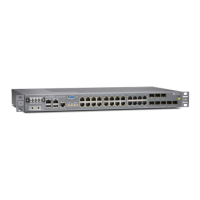Table 144: ATM show interfaces Output Fields (continued)
Level of OutputField DescriptionField Name
extensiveInput errors on the interface whose definitions are as follows:
• Errors—Sum of the incoming frame aborts and frame check sequence (FCS)
errors.
• Drops—Number of packets dropped by the input queue of the I/O Manager
ASIC. If the interface is saturated, this number increments once for every
packet that is dropped by the ASIC's random early detection (RED)
mechanism.
• Invalid VCs—Number of cells that arrived for a nonexistent VC.
• Framing errors—Sum of AAL5 packets that have FCS errors, reassembly
timeout errors, and length errors.
• Policed discards—Number of frames that the incoming packet match code
discarded because they were not recognized or not of interest. Usually, this
field reports protocols that the Junos OS does not handle.
• L3 incompletes—Number of incoming packets discarded because they failed
Layer 3 (usually IPv4) sanity checks of the header. For example, a frame with
less than 20 bytes of available IP header is discarded.
• L2 channel errors—Number of times the software did not find a valid logical
interface for an incoming frame.
• L2 mismatch timeouts—Number of malformed or short packets that caused
the incoming packet handler to discard the frame as unreadable.
• Resource errors—Sum of transmit drops.
Input errors
extensiveOutput errors on the interface. The following paragraphs explain the counters
whose meaning might not be obvious:
• Carrier transitions—Number of times the interface has gone from down to up.
This number does not normally increment quickly, increasing only when the
cable is unplugged, the far-end system is powered down and up, or another
problem occurs. If the number of carrier transitions increments quickly,
increasing only when the cable is unplugged, the far-end system is powered
down and then up, or another problem occurs. If it increments quickly (perhaps
once every 10 seconds), the cable, the far-end system, or the PIC or PIM is
malfunctioning.
• Errors—Sum of the outgoing frame aborts and FCS errors.
• Drops—Number of packets dropped by the output queue of the I/O Manager
ASIC. If the interface is saturated, this number increments once for every
packet that is dropped by the ASIC's RED mechanism.
• Aged packets—Number of packets that remained so long in shared packet
SDRAM that the system automatically purged them. The value in this field
should never increment. If it does, it is most likely a software bug or possibly
malfunctioning hardware.
• MTU errors—Number of packets larger than the MTU threshold.
• Resource errors—Sum of transmit drops.
Output errors
detail extensiveTotal number of egress queues supported on the specified interface.Egress queues
Copyright © 2017, Juniper Networks, Inc.2474
ACX Series Universal Access Router Configuration Guide

